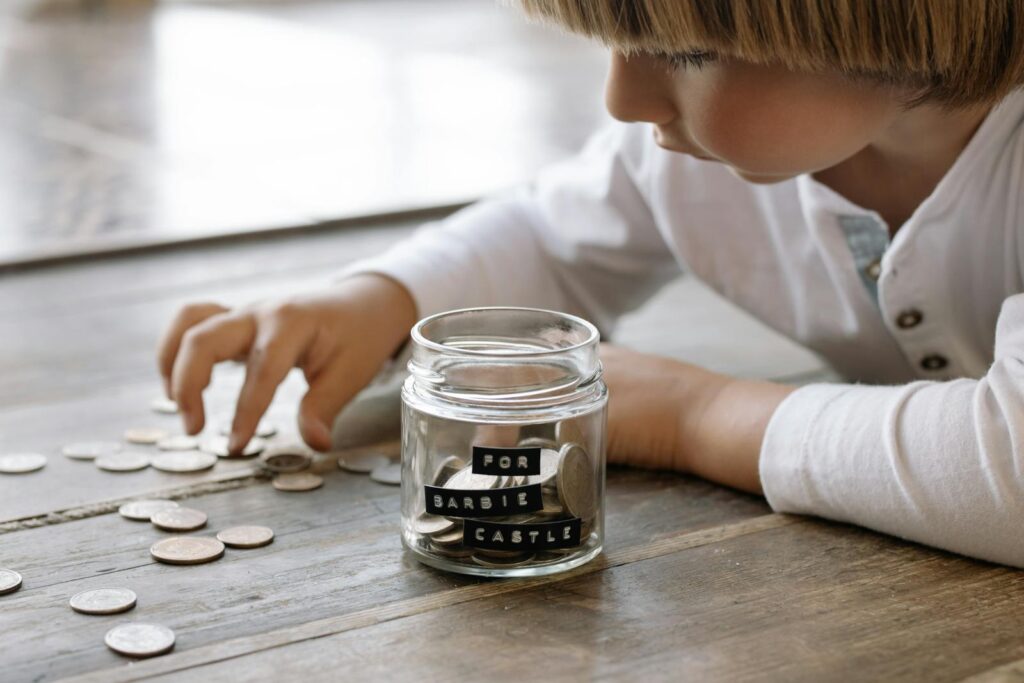Allowance Systems That Teach Kids 6-10 to Save, Spend and Give Wisely
Let’s be honest. The moment your kid asks “Can I have this?” for the hundredth time at Target, you know it’s time to have that conversation about money. Setting up an allowance system might feel overwhelming at first, but it’s actually one of the best ways to teach kids how money really works.
If you’re wondering when to start and how much to give, you’re not alone. Most of us are figuring this out as we go, and that’s perfectly okay.
Why Allowances Actually Matter (Beyond Just Getting Them to Stop Asking)
Here’s the thing about allowances. They’re not just about giving kids spending money. They’re about helping our children understand that money is a tool, not something that magically appears when they want something.
When kids manage their own small amounts of money, they learn to make real decisions. They experience the sting of buyer’s remorse when they blow their allowance on something silly, and they feel genuine pride when they save up for something they really want. These aren’t lessons we can just tell them about. They have to live them.
Research shows that kids who learn money management early are more likely to become financially responsible adults. As moms, isn’t that what we want? To raise kids who won’t be calling us at 25 asking for rent money?
The sweet spot for starting allowances is usually between ages 6 and 10. By this age, kids understand basic math and can grasp the concept that they can’t have everything right now. Plus, let’s face it. This is when the “I want” requests really start ramping up.

Finding the Right Age and Amount (Without Breaking the Bank)
The most common question I hear is: “When should I start?” Most experts suggest around age 6, when kids begin connecting money to the things they want. By age 10, they can handle a bit more responsibility and larger amounts.
As for how much? There’s no magic formula, but many families use the age-based approach, $1 per year of age per week. So a 7-year-old might get $7 a week. Others base it on what they expect their child to cover with their allowance. The key is keeping it manageable so kids can actually practice saving, spending, and making those small daily decisions.
Remember, the goal isn’t to fund their every desire. It’s to give them enough to learn with.
The Three-Jar System That Actually Works
Here’s a simple system that many families swear by: divide the allowance into three parts—save, spend, and give. It doesn’t have to be equal thirds, but each category gets something.
This approach helps kids see that money isn’t just for immediate gratification. They learn that some money should be tucked away for bigger goals, some can be enjoyed now, and some can help others. It’s a lesson that will serve them well into adulthood.
When your kids hit the teenage years, these early habits become even more valuable. A teen who learned to save at 8 is much more likely to understand saving for a car at 16.
Real-Life Lessons That Stick
The beauty of allowances is in the natural consequences. When your child spends all their money on candy and then can’t afford the toy they wanted, that’s a lesson worth more than any lecture you could give.
I’ve watched kids agonize over whether to buy something small now or wait for something bigger later. These decisions might seem trivial to us, but they’re building critical thinking skills about money that will last a lifetime.

And here’s something beautiful that often happens: when kids set aside part of their allowance for giving, they become more thoughtful about helping others. Whether it’s contributing to a school fundraiser or donating to a cause they care about, they learn that money can be a force for good.
Growing with Your Kids
As your children get older, their allowance system should evolve too. Teenagers might benefit from monthly allowances instead of weekly ones, helping them learn longer-term budgeting. You might also increase their allowance while giving them more financial responsibilities, like buying their own school supplies or contributing to family outings.
The foundation you built when they were younger makes these transitions smoother. A child who learned to save for a special toy at 8 is better equipped to save for a school trip at 15.
Check out Acorns Early – a smart money app and debit card that teaches kids the value of money.
Addressing the Doubts
I know some of you might be thinking, “But what if I’m giving them too much freedom with money?” or “What if they just waste it all?”
Here’s the thing. They probably will waste some of it. And that’s exactly the point. Better to learn these lessons with $5 at age 7 than with $500 at age 17.
Studies show that children who receive regular allowances and have conversations about smart money choices actually develop better financial habits as adults. A 2022 study found around 79% of U.S. parents give their children an allowance.
The Bottom Line
An allowance isn’t about spoiling our kids or making our lives easier (though it might do that too). It’s about giving them real-world practice with money in a safe environment where the stakes are low.
Starting between ages 6 and 10 hits that sweet spot where kids are curious and eager to learn. As they grow, you can adjust the system to match their maturity and needs.
The most important ingredient? Consistent guidance from you. When we help our kids navigate these small financial ups and downs, we’re raising confident, capable young adults who understand the value of money, and that’s a gift that keeps on giving.